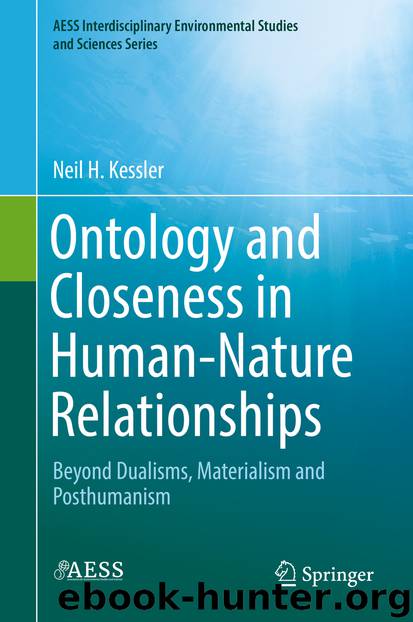Ontology and Closeness in Human-Nature Relationships by Neil H. Kessler

Author:Neil H. Kessler
Language: eng
Format: epub
ISBN: 9783319992747
Publisher: Springer International Publishing
5.6.1 Sentience
One of the key justifications for taking up the cause of animals specifically is rooted in many CAS theorists’ belief that because animals are sentient, they ought to be freed from exploitation and other instrumentalization (Best, 2009; Twine, 2012, Weitzenfeld & Joy, 2014). The OED defines a sentient being as one “[t]hat feels or is capable of feeling; having the power or function of sensation or of perception by the senses” (“Sentient”, 2018). This is only one of many kinds of definitions one finds of sentience, however, with others including elements like the capacity for consciousness or the ability to feel pleasure or pain. But, at least according to the OED definition above, if sentience is the reason to include animals in efforts to eradicate exploitation, I note that it cannot be definitively concluded that plants are not sentient. To support this point and using the OED definition, one should ask which senses are meant, since plants perceive with their senses, they just don’t happen to be human senses. For example, they are able to detect and respond to attacks by predators, releasing volatile organic compounds into the air that other plants can detect (Baldwin, Halitschke, Paschold, Von Dahl & Preston, 2006). They certainly couldn’t detect an attack and have that unique response if they didn’t have the ability to sense one. If one were to counter such a possibility by saying that this is not what is intended by “senses” because they aren’t mind-based, this would be adding a qualification to sentience that the OED definition doesn’t carry. It would also be restricting the definition so that it more closely aligned with human senses, which is anthropocentric and dualist. Further, and as I’ll explore in depth in Chap. 10, it is an unsettled matter whether plants have minds.
As just one example of the use of sentience, when discussing actor-network theory (ANT) Twine (2012) says “…it is not new to recognize that ANT is of potential use to the study of human/animal relations (Whatmore & Thorne, 2000) in large part due to its insistence upon the agency of nonhuman actors” (p. 25). But, if one were to think that this capacity for agency meant including nonanimal actors with agency, Twine qualifies his statement in an end note by saying, “Of course there is a danger in ANT that in the granting of agency to animals that they become…conflated with non-sentient objects” (p. 36). It’s interesting that he constructs a dyad with “animal” in one half and “non-sentient object” in the other. Such a dyad could be read in one of two ways. The first is that the dyad has, as one half, sentient animals and on the other, all remaining more-than-human beings that not only lack sentience, but are “objects.” This reading would certainly reinforce my suggestion in earlier chapters that dualisms can act to reduce more-than-human beings to largely passive, material objects of instrumental value. The other way that the dyad can be read is that there are
Download
This site does not store any files on its server. We only index and link to content provided by other sites. Please contact the content providers to delete copyright contents if any and email us, we'll remove relevant links or contents immediately.
The Lonely City by Olivia Laing(4746)
Animal Frequency by Melissa Alvarez(4394)
All Creatures Great and Small by James Herriot(4228)
Walking by Henry David Thoreau(3892)
Exit West by Mohsin Hamid(3776)
Origin Story: A Big History of Everything by David Christian(3648)
COSMOS by Carl Sagan(3553)
How to Read Water: Clues and Patterns from Puddles to the Sea (Natural Navigation) by Tristan Gooley(3406)
Hedgerow by John Wright(3273)
The Inner Life of Animals by Peter Wohlleben(3259)
How to Read Nature by Tristan Gooley(3248)
How to Do Nothing by Jenny Odell(3232)
Project Animal Farm: An Accidental Journey into the Secret World of Farming and the Truth About Our Food by Sonia Faruqi(3174)
Origin Story by David Christian(3145)
Water by Ian Miller(3126)
A Forest Journey by John Perlin(3026)
The Plant Messiah by Carlos Magdalena(2881)
A Wilder Time by William E. Glassley(2817)
Forests: A Very Short Introduction by Jaboury Ghazoul(2790)
